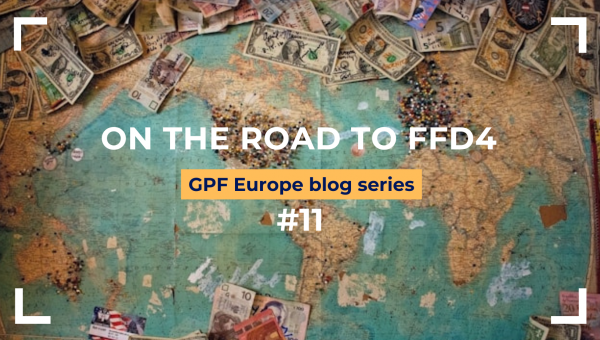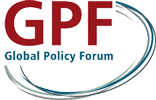News

By Bodo Ellmers
The Fourth International Conference on Financing for Development (FfD4) – due to be held next month in Sevilla– aims to drive forward critical reforms to the international financial architecture and to help close the significant financing gap for the Sustainable Development Goals (SDGs). However, the fourth and final preparatory committee (PrepCom) meeting, held at the end of April at the UN headquarters in New York, revealed the remaining points of contention. As informal negotiations continue over the next few weeks, the journey promises to be challenging. Instead of the hoped-for final sprint towards an ambitious new global financing framework adopted by consensus, the road ahead resembles an obstacle race.
Unexpected obstacles ahead
Since the FfD4 preparation process began last July – symbolically in Addis Ababa, where the last Financing for Development conference (FfD3) took place in 2015 – new and unexpected challenges have emerged. The new US administration suspended the major share of its official development assistance (ODA) virtually overnight. In the shadow of the USAID shock, European donors have also announced massive ODA cuts.
The tariff hikes, also declared by the US government this spring, threaten to hit fragile developing countries disproportionately hard. Two of the most important sources of development funding – ODA and export revenues – are threatening to collapse simultaneously just before policy-makers congregate in Sevilla. The recent events have also shown how fragile the current rules-based multilateral system really is. This is an important lesson, because Sevilla is supposed to mark a key moment in multilateral norm-setting when it comes to development finance.
During the negotiations in New York, it became clear that responses to the shocks in the Global North and Global South were very different. The Europeans and many other OECD countries are of the opinion that more needs to be done in the area of mobilizing private financial resources to make up for the lack of public funds. Governments in the Global South, on the other hand, want to see progress, particularly in the areas of taxes and debt. Their negotiators stress that international tax cooperation must be strengthened in order to combat illegitimate financial flows effectively and grant countries in the Global South more tax rights. Moreover, the issue of debt is increasingly taking centre stage in the negotiations, and for good reasons.
Debt architecture: a hurdle in the negotiations
The debt of developing countries has literally exploded in the decade since FfD3 took place in Addis Ababa. Rapidly rising interest payments are eating up government and export revenues, and more than 3 billion people now live in countries whose governments spend more on debt servicing than on education or health.
The spokesperson for the Africa Group at the UN opened the Financing for Development Forum, which this time took place in conjunction with the last meeting of the FfD4 Preparatory Committee, with a vivid and drastic comparison: more than 90 percent of African countries now have to spend a higher proportion of their export revenues on servicing their debt than post-war Germany did under the terms of the 1953 London Debt Agreement.
A maximum share of 3 percent – payable only if Germany achieved export surpluses – was considered at the time to be the upper limit of what was possible if a country was to rebuild its economy. This is probably still the case, which explains Africa’s plight: the current debt system is draining scarce capital, making creditors rich and keeping developing countries poor.
A fundamental reform of the debt architecture is considered by many to be the key negotiating point in the final preparations for the summit in Sevilla. The developing countries’ list of demands includes the establishment of a Global Debt Authority and an intergovernmental process at the UN that could lead to a multilateral debt workout mechanism, perhaps under a comprehensive UN Convention on Sovereign Debt that some parties were asking for. The process itself is already mandated in the latest negotiating text, but this was not met with enthusiasm by all parties. This is despite the fact that even EU negotiators believe that progress in reforming the debt architecture is a key criterion for the success of FfD4.
Pertinent issues on the road to Sevilla
However, the debt chapter is not the only area where there are still obstacles to overcome in the current geopolitical and ideological environment. Here is a brief overview of the central points of conflict that remain in the individual action areas.
Chapeau: Normally, the chapeau to a UN agreement is not very relevant because it has no real operational implications. But here’s another shock: For the new US administration, even terms such as “sustainable development”, “gender” or “inclusion” are red flags that it does not want to appear in UN documents. For the vast majority of the global community, however, the UN-agreed 2030 Agenda for Sustainable Development in its entirety remains the guiding principle that FfD4 must follow. In the corridors of power in New York, some have expected that the US would leave the FfD negotiations, as it has done earlier this year in the parallel UN Tax Convention processes. For some, a stronger “consensus minus one” would, for the time being, even be preferable to a watered-down outcome, despite the importance of the US in financial matters.
Domestic resources and taxes: Tax governance was the sticking point in Addis Ababa in 2015, but the FfD process has now been made somewhat easier by negotiations on the UN Tax Convention. However, some reluctant actors appear to want to soften the terms of reference negotiated there through the FfD process, which is meeting resistance from the G77 – the negotiating group of developing and emerging countries at the UN – and, in particular, from the Africa Group and non-governmental organizations (NGOs).
The debate on global taxes, which was initiated by the Global Solidarity Levies Task Force spearheaded by France, among others, is also controversial. While stakeholders acknowledge that innovative sources of finance are badly needed, some developing countries fear that environmental taxes applied uniformly around the globe could undermine the principle of common but differentiated responsibility in climate financing.
The current negotiating text contains some concrete proposals, such as establishing global beneficial ownership registries, which would facilitate the fight against illicit financial flows.
Mobilization of private investment: This currently appears to be the least controversial area of the negotiations, as developed countries are focusing on this area and developing countries recognize the need for private investment. The negotiating document also does not lay the groundwork for any new international institutions or agreements but primarily contains non-binding guidance for Multilateral Development Banks (MDBs) or recommendations for action that each member state could also take unilaterally. As this does not really commit anyone to anything, there is little reason to object.
Trade and export revenues: Not surprisingly, this has been a major topic since the outbreak of the tariff war between the US and other countries. While the zero draft for Sevilla highlighted improvements on detailed issues of the trading system, the fourth session was about renewing the commitment to the rules-based multilateral trading system itself.
Public development financing: Here too, the latest setbacks have led to a new focus, on recommitment to the ODA targets, primarily the 0.7 percent target for the “old” donors. At the beginning of the negotiations, there was still hope that Sevilla could revitalize the aid effectiveness agenda, but now emphasis has shifted towards saving ODA in significant quantities. Commitments to maintain the integrity of ODA by excluding non-aid items (such as refugee costs) and providing better incentives for country programmable aid and budget support have not yet fully convinced the DAC donors.
An explosive political issue at the Financing for Development Forum: As there were hardly any high-ranking representatives from traditional donor countries of the Development Assistance Committee (DAC) present, and the EU Commissioner for Development Jozef Síkela had chosen the panel on private investment in line with EU preferences, the panel on “Revitalizing Development Cooperation” was occupied by Qatar and Russia.
Systemic issues: A number of new issues have emerged during the FfD4 process, especially related to the debate on lowering the cost of capital in developing countries. Notably, there is pressure by developing countries to reform the system of credit ratings and other structures that seem responsible for high-risk premiums that they have to pay, such as the Basel 3 regulations. Beyond debt, measures to reduce the cost of capital emerged as the second decisive success criterion for Sevilla.
Moreover, it remains a priority for the G77 that FfD4 becomes a milestone in the reform of the international financial architecture, in particular for the governance reform of its central institutions – the IMF and the World Bank. Proposals for the reform of their financing instruments include a new playbook for the IMF’s Special Drawing Rights, stronger but less intrusive credit facilities, and the introduction of new swap lines. Countries that are unwilling to accept reform are trying to block this development by denying the UN the right to make decisions in this area. This would be the task of the IMF and World Bank’s own decision-making bodies, in which the old powers naturally have the majority and have been blocking overdue reforms for decades. Other majorities can arise at the UN because the principle of equality of states applies (one country = one vote), while richer countries have more voting rights at the IMF and World Bank.
Consensus or coalition of the willing?
Voting rights could still play a role in the final run up to Sevilla. So far, all the outcome documents of the UN conferences on financing for development have been adopted by consensus, starting with the Monterrey Consensus in 2002, the Doha Declaration in 2008, and finally the Addis Ababa Action Agenda in 2015. If the obstacles are not overcome in the remaining weeks, the Sevilla conference could end in a vote for the first time. The general expectation is that the vast majority of UN Member States, spearheaded by the G77 and the EU as most relevant negotiating groups, will show themselves to be constructive supporters of the multilateral order in general and of the 2030 Agenda in particular. The agreement of a new global financing framework that meets current needs is, of course, an essential part of this. As the negotiations come to a close, hiding behind a reluctant outlier is not an option for any constructive player.
